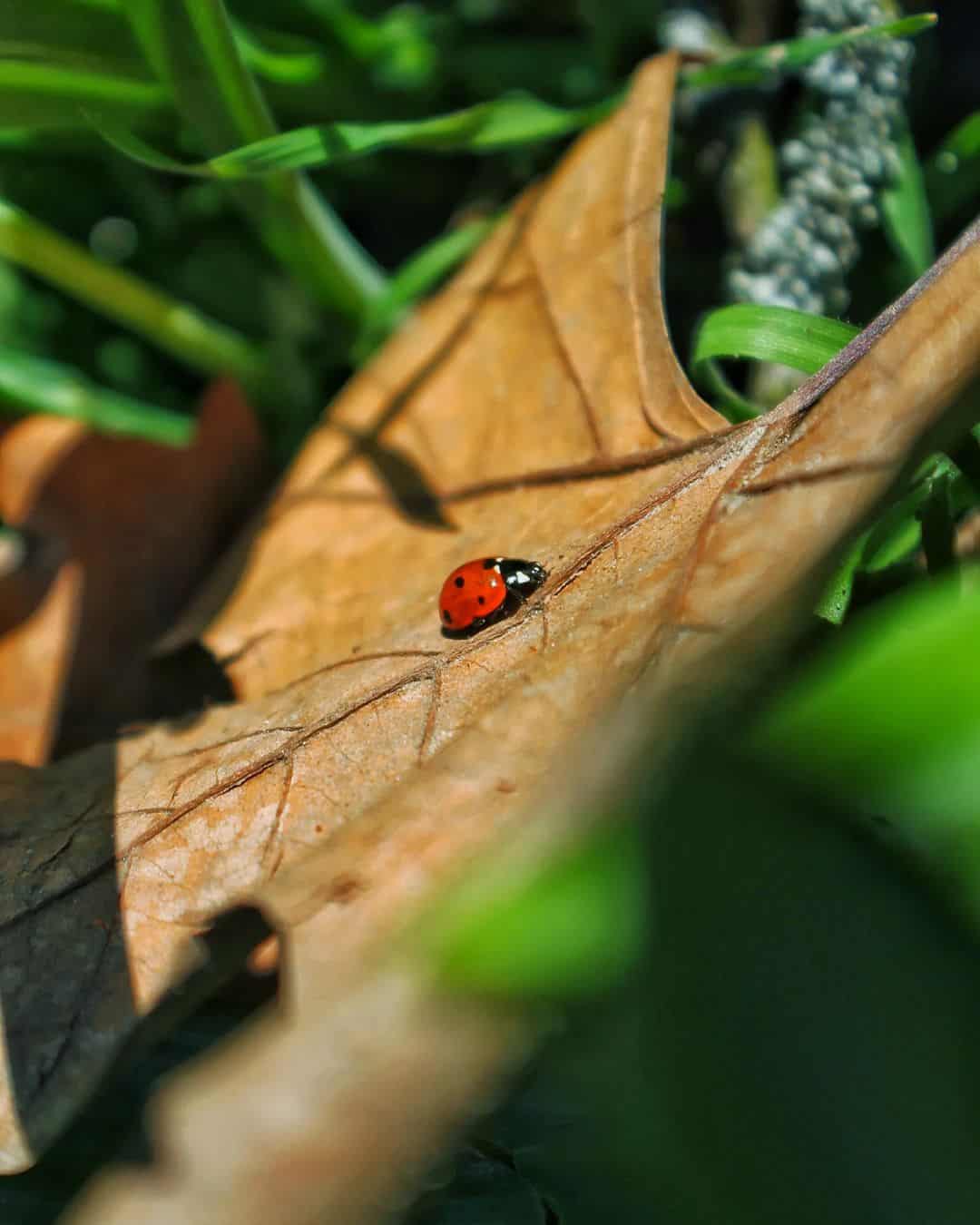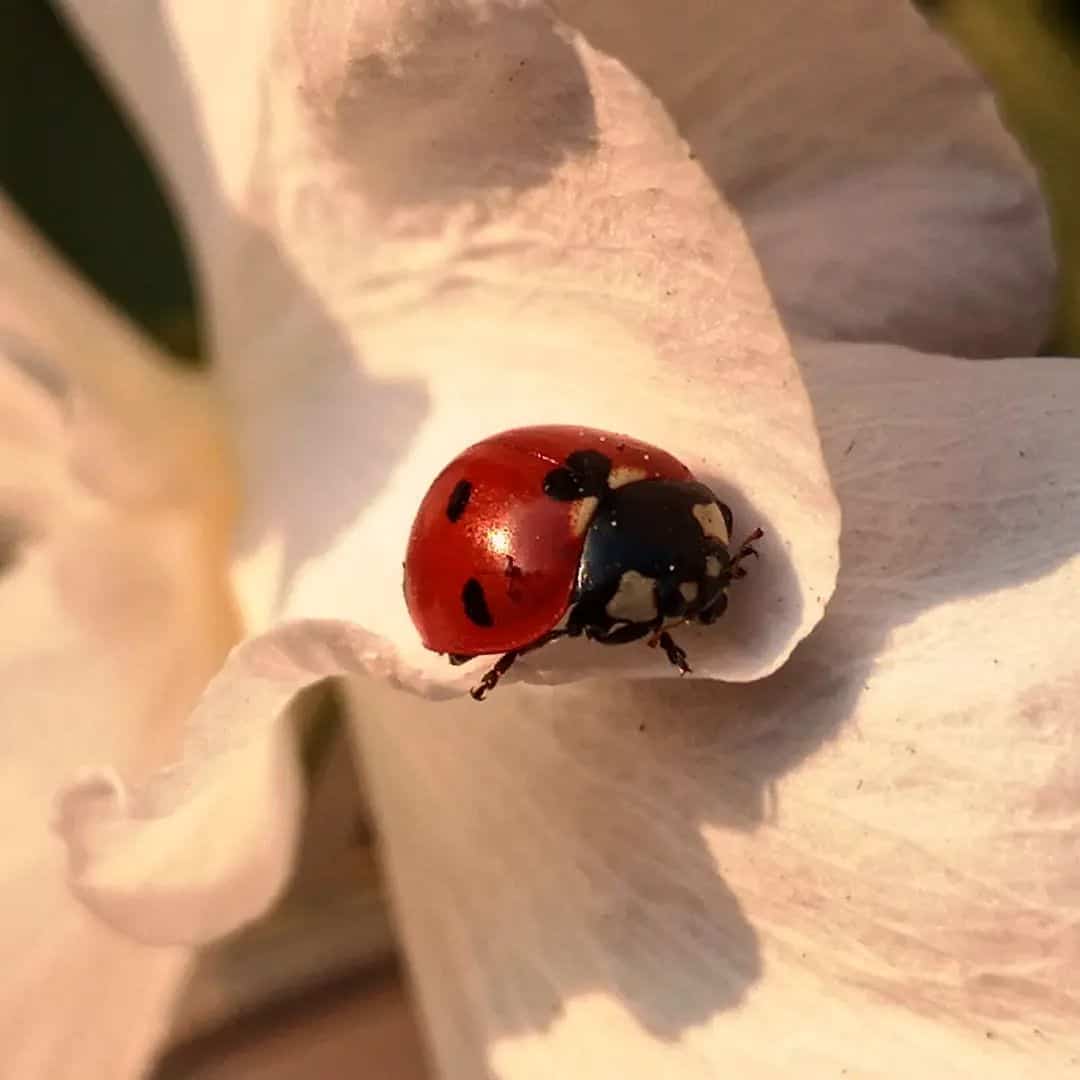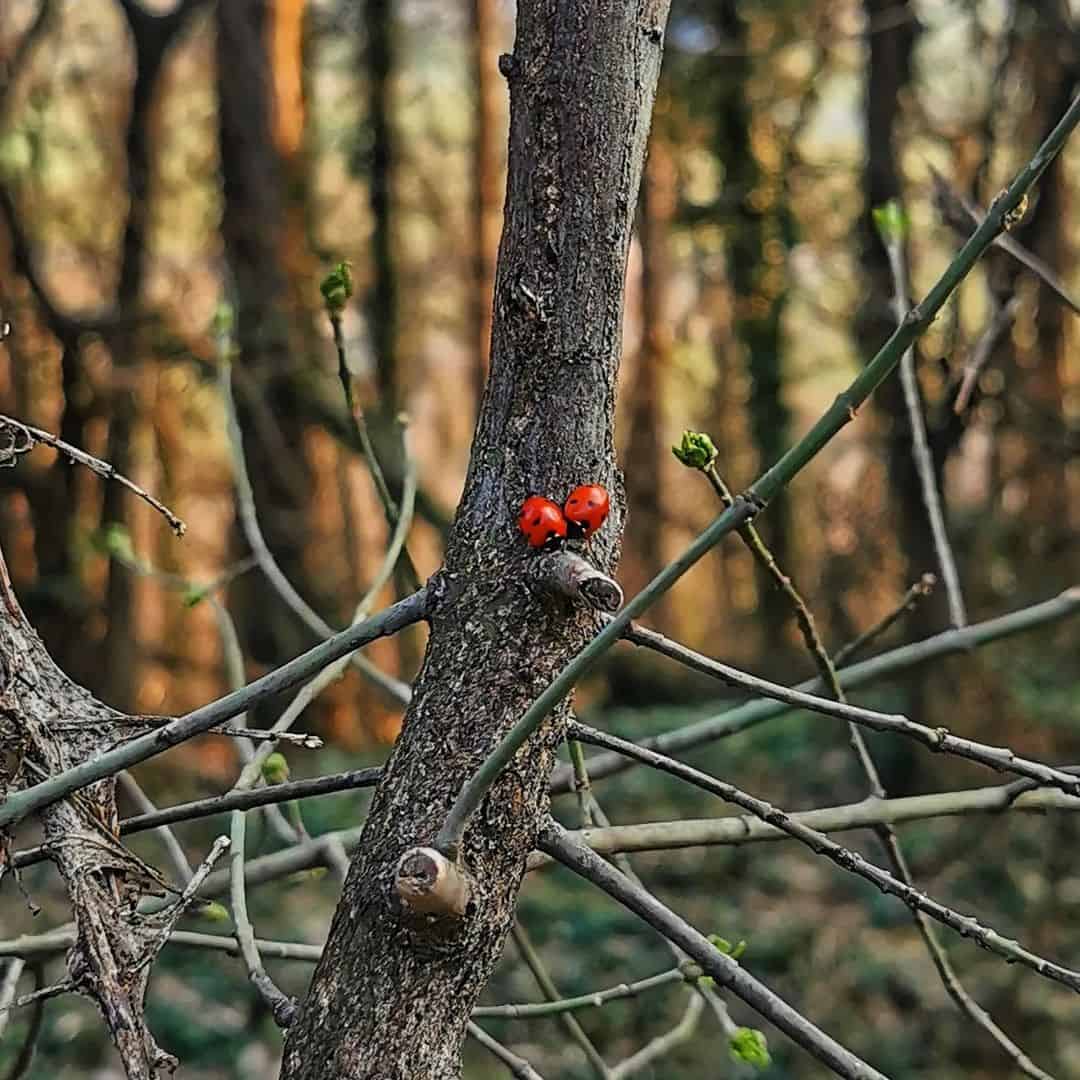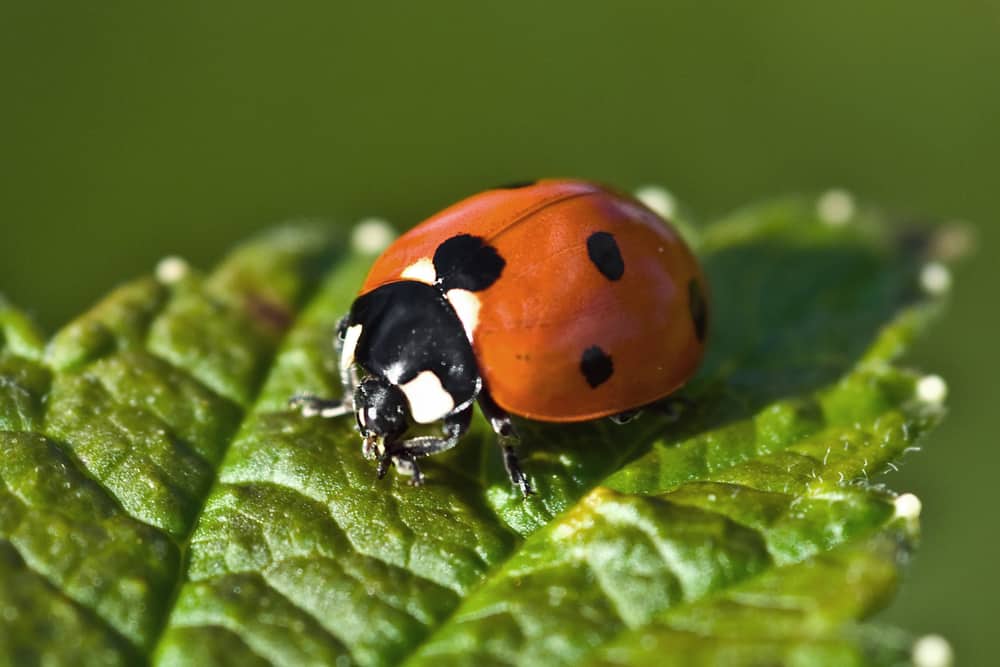Ladybugs are popular insects, and some people believe that seeing one in your garden is a sign of good fortune. But how long do ladybugs live, and how does their life cycle work? The life of a ladybug is a fascinating one!
Here we will answer your questions about the lifespan of ladybugs and other information related to these lovely creatures. We will also share details on how to keep ladybugs alive and answer some FAQs. Let’s start by seeing how long ladybugs live.
How Long Do Ladybugs Live?
After a female ladybug lays eggs, these will hatch after three to ten days depending on the temperature. Its larva will grow and live for a month before it turns into a pupa. This stage will last for 15 days before it turns into an adult ladybug. These bugs can live up to a year.
The different stages of the ladybug’s life cycle:
- Eggs – The ladybugs’ eggs are tiny and have a spindle shape. All of these are arranged in clusters.
- Larvae – These are elongated and are considered to have an alligator shape. The ladybug larvae are usually a bit pointed at the rear, while the body is concealed in little bristles.
- Pupae – These turn out a bit rounded and are dark-colored. The pupae are often linked to surfaces by their hind ends.
- Adults – Adult ladybugs have a sphere shape and are usually smooth. You can easily recognize them by their colors and markings.
How Do You Keep Ladybugs Alive?
Like any living creature, ladybugs have specific needs to survive. Let’s get into more detail!
- Provide Enough Air – Adequate amounts of oxygen is a need for ladybugs to survive. However, like praying mantises, they don’t breathe through the lungs. Instead, they inhale air through the tiny holes on the sides of their bodies, under their wings.
- Give them Adequate Amounts of Water – Ladybugs need to drink water to stay hydrated. However, avoid giving them too much water since that will drown them.
These creatures can close their air holes to prevent their bodies from losing water. They can also stay alive underwater for a short period. However, they’re like humans holding their breath underwater, so they can’t last long that way.
- The Right Temperature, Lighting, and Humidity – Ladybugs can survive under room temperature, and lighting isn’t necessary. However, these tiny creatures need enough moisture, and you can add this to their habitat by leaving a piece of wet paper towel. Also, mist the terrarium often to maintain moisture.

Can You Make Ladybugs as Pets?
If you catch a ladybug and want to make it your pet for a while, you can do this since they’re easy to care for. You can keep ladybugs at home, and if you want to have more of them, you can breed them too.
You can keep ladybugs in a small, well-ventilated container, and feed them with a watered-down solution of syrup, or raisins soaked in water. It’s also best to feed them mealybugs or aphids if you can.
Creating a Habitat for a Ladybug
To create a habitat for your ladybug, use a plastic container with holes for ventilation. Clear containers designed for insects are great, but you can also use any other material.
Larger containers are recommended if you’re keeping more than one ladybug. If the container you got doesn’t have holes, you can punch them on the lid. Be sure the holes are an inch apart from each other. Also, don’t make these too big to prevent the ladybug from getting out.
The natural habitat of a ladybug is where there’s dirt, twigs, leaves, and flowers. Collect some of these items and place them in the container to mimic their original surroundings. Doing so will make the ladybug feel at home.
You can spread some soil in the bottom and add some grass and leaves as well. If you can’t find items from nature, you can fold pieces of cardboard and then drop these into the container. The ladybug can climb or hide under these.

Breeding Ladybugs
Female ladybugs can lay around a thousand eggs in their lifetime, but not all will hatch. Of course, you’ll need to feed them aphids or mealybugs before breeding, since this is their staple diet.
Placing a male and female ladybug in the same container can bring them to mate. Females can lay up to 300 eggs, and it takes seven days after mating. Usually, eggs hatch into larvae around three to ten days.
Like fully-grown ladybugs, larvae feed on aphids, mealybugs, and other small, soft-bodied insects.
Also, make sure to separate the larvae from their parents. Adult ladybugs tend to eat their larvae in times of food shortage. Once you separate the baby ladybugs, feed them adequately and keep them hydrated so they can grow well.
The larval stage of a ladybug lasts for a month. During this period, they molt four times before entering the pupal stage.
As pupae, they don’t move or eat. They only stay on the underside of leaves for a week or two before emerging into adult ladybugs. Depending on the species, temperature, and nutrition, the fully developed ladybugs can survive for two months to a year.
Releasing the Ladybugs
Nature is the home of ladybugs, so it’s best to let them go after a few days of caring for them. Unfortunately, ladybugs survive for only up to two weeks in captivity. You can enjoy taking care of a ladybug and observing it, but let it go back to its real home.
You can find and collect ladybugs in areas where they hibernate, and it’s best to keep them in cold areas before releasing them. In fact, it’s good to keep them in the refrigerator until you’re ready to release them. Doing this will help them live longer, and they’ll have fewer chances of dying when it’s their time to fly freely.
Once ladybugs warm up after being released, they instantly disperse to seek food and water. They do this to replenish their energy reserves.
It’s best to release ladybugs in spring or summer. Releasing them in fall or winter will cause them to find shelter in other homes.

What Can You Feed Ladybugs?
As predators, ladybugs generally feed on other insects to survive. That’s why farmers and gardeners love using them as a natural pest control.
Particularly, ladybugs love feeding on aphids, a type of small, wingless, sap-sucking insect pest. These are commonly found on the undersides of leaves or the stems of flowering trees and plants. Aphids are semi-translucent and can be brown, green, or black.
One ladybug can eat over 20 aphids per day. So if you’re taking care of or breeding ladybugs, put a few leaves or branches with aphids in their habitat. If you find it difficult to look for aphids, check out the plants where you caught your ladybug. They tend to stick to sources of aphids since it’s their favorite.
Aside from aphids, ladybugs also feed on insect eggs, whiteflies, mites, and small caterpillars on plant leaves or stems. Ladybugs also eat some human food like honey, lettuce, and raisins. These can cover your ladybug’s diet if you can’t find a good source of aphids.
Soak raisins in water for a minute before feeding to make it easier for ladybugs to eat. Add a fresh lettuce leaf and a small dab of honey. Add two to three drops of water to complete the meal. Remember, they can’t have too much water since they might end up drowning.
FAQ’s
1. How can you tell the age of a ladybug?
There’s no way to determine a ladybug’s age. As mentioned, they only last for a year. With the phases of their lifecycle being fast, it’s almost impossible to know how old they are once they reach the adult stage of their cycle.
Some people believe that the number of spots on the elytra (back or wing case) of a ladybug indicates its age in years. However, that’s not true since they can barely reach two or three years. The number of spots can only help you identify the ladybug species since these usually vary by a specific number.
2. Do ladybugs bite?
Ladybugs are pleasing to look at because of their multicolored and decorative red patterns. However, they can also pinch using their legs, which can produce a mark. This can lead to skin welts for people who are allergic to ladybugs. Technically they don’t bite humans, but it can feel like it.
3. What do ladybugs hate?
Ladybugs dislike citrus, citronella, and other plants in the mint family, like camphor and peppermint. They also avoid the scent of bay leaves, chrysanthemums, and cloves. The strong aroma can confuse a ladybug’s senses due to overstimulation.
Conclusion
Generally, ladybugs live for around a year in the wild. However, in captivity, they will struggle to live beyond a couple of weeks. Due to this, it can be fun watching them breed and hatch out, but once they reach their adult size, it’s best to release them.
